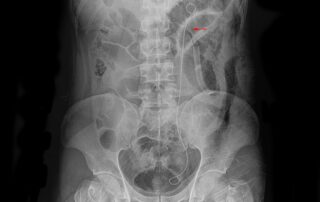Botox Bladder Injections: How Do They Help with Overactive Bladder?
If you’ve ever had to get up in the middle of a movie, the middle of the meeting, or the middle of a meal to use the restroom—even though you went not too long ago—you may have overactive bladder. Overactive Bladder, sometimes referred to as OAB, is the frequent and urgent need to empty your bladder. It can be inconvenient and frustrating to pull yourself away from activities to go to the bathroom and can even lead to anxiety, shame, and depression. If you feel like you’re the only one who must constantly excuse themselves from meetings, meals, or movies to use the restroom, you aren’t. OAB affects approximately 33 million people in the United States. The good news is, there are treatment options available. One of the more effective? Botox bladder injections. We’re sharing what you need to know about Botox bladder injections to treat OAB.
How does Botox help overactive bladder?
Botox is a drug that blocks specific chemical signals from nerves that signal muscles to contract. When the signals are blocked, muscles relax. When you have to urinate, chemical signals travel from nerve cells to your bladder muscle to signal it to contract. If you have overactive bladder, your bladder muscles contract unpredictably and can lead to the sudden and frequent urge to urinate or leaking urine. Botox is injected directly into the bladder muscles to block nerve signals that cause overactive bladder.
Who can give Botox injections?
A nurse, advanced practice provider, or physician who is trained in Botox injections can administer Botox. If you are receiving Botox injections in your bladder, you want to have a medical provider who specializes in the urinary system, called a urologist, administer your Botox injections.
Do you need anesthesia for bladder Botox injections?
Botox treatments for overactive bladder can be done in your doctor’s office. You do not need general anesthesia for Botox injections in the bladder. Before administering Botox injections, your doctor will fill your bladder with a numbing agent and may offer you a sedative to help you remain relaxed and comfortable.
How is Botox injected into the bladder?
After your doctor has administered the numbing agent to your bladder, they will guide a narrow tube, called a cystoscope, up your urethra and into your bladder. A series of small injections are delivered through the cystoscope and into the bladder muscle. The entire procedure, from numbing to injections, takes approximately 30 minutes.
Does Botox hurt afterward?
There is typically no pain after receiving Botox injections in the bladder, but it may sting or burn the first few times you urinate.
What to expect after Botox injections in the bladder?
After the procedure, your doctor may have you wait in the office for 30 minutes to make sure you can easily empty your bladder. It may burn or sting the first few times you urinate after receiving Botox injections in the bladder. Some patients have small amounts of blood in their urine immediately following treatment. You can drive yourself home or back to work after your procedure.
What are the long-term effects of Botox on the bladder?
There is a small chance of side effects in the first 12 weeks following Botox injections in the bladder. The most common side effect following Botox injections in the bladder is urinary tract infection (UTI). Your doctor may prescribe an antibiotic before your procedure to prevent the chances of you developing UTI. Other side effects include difficult or painful urination and the inability to fully empty your bladder. If you experience any of these side effects, it is important to let your doctor know.
How often do you need to do Botox injections?
As soon as two weeks after treatment you can start to experience relief of urine leakage and other OAB symptoms. Everyone responds to treatments differently, but most people can manage the symptoms of overactive bladder with just two Botox treatments a year. You should follow up with your doctor after your first treatment to see how you’re responding and be proactive in scheduling your next appointment for approximately six months after your last appointment.
You don’t have to continue to plan your day around bathroom breaks, constantly check to make sure a restroom is available, and frequently excuse yourself from important meetings or fun social situations. Botox is just one of many treatments available for overactive bladder. Schedule an appointment with your doctor to learn more about Botox injections and other treatment options for overactive bladder.
RELATED ARTICLES
OUR VALUES
Our mission is to better human lives through personalized healthcare and innovation.
We are committed to providing compassionate and extraordinary care by acting with attention, joy and authenticity.
We advance healthcare by aligning patients, providers and payers.
We aim to lead the way by way of innovation, excellence and the drive to change and make a lasting difference.
Patient experience is our top priority. We show this by operating with integrity, listening, and building trust with our patients and one another.
We are committed to teamwork, family spirit and embracing each other’s resourcefulness, resilience and dedication.






